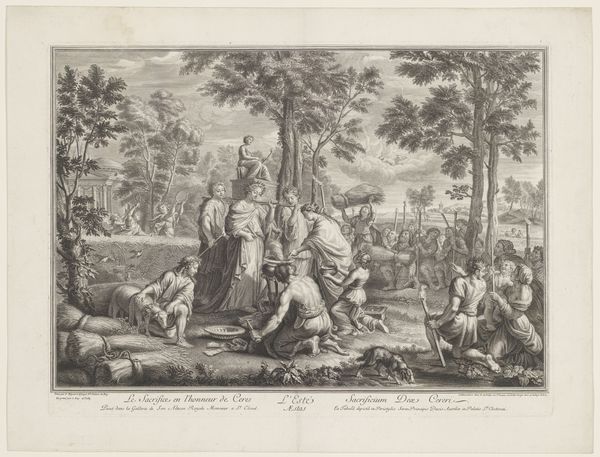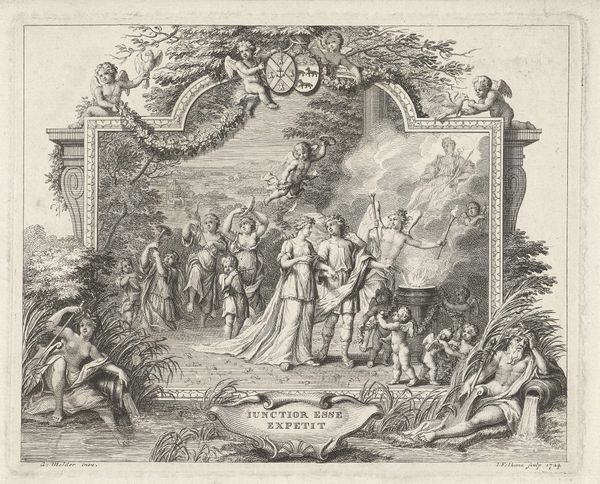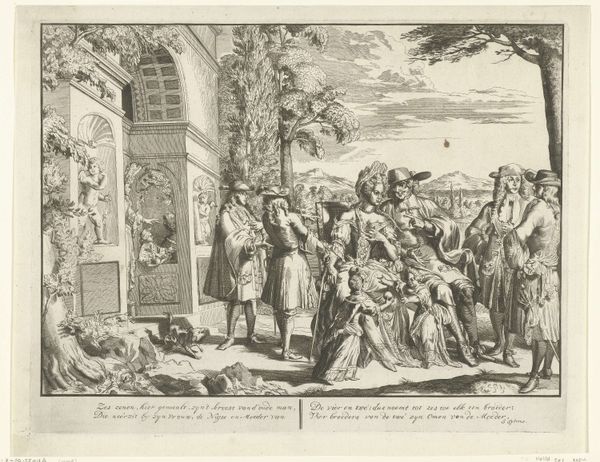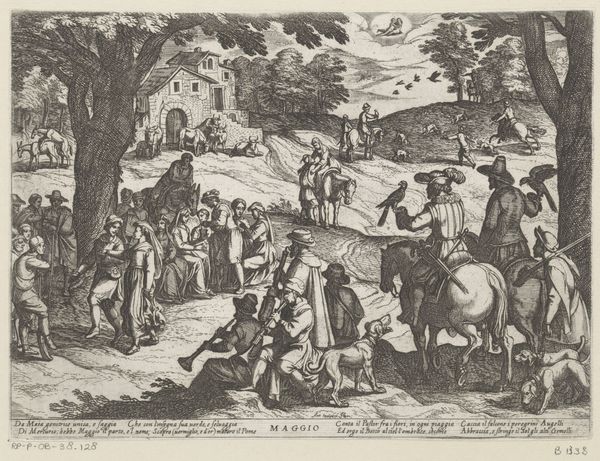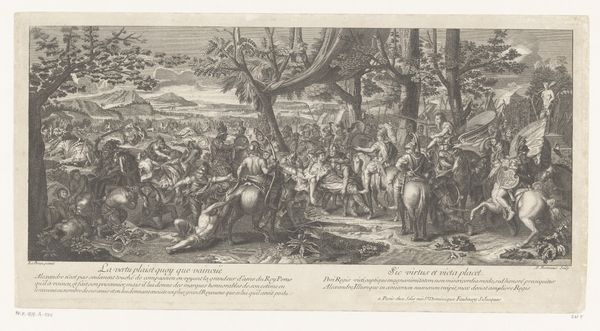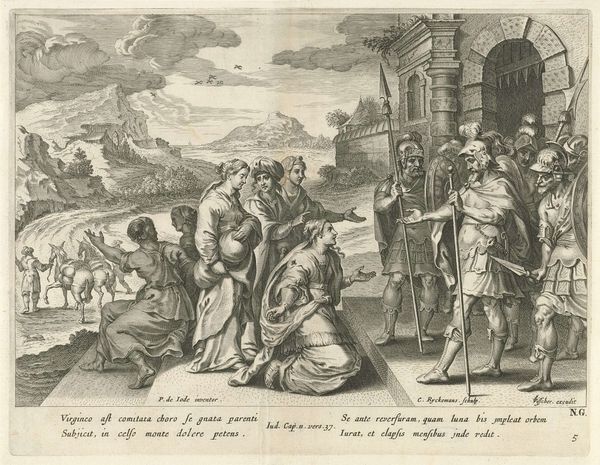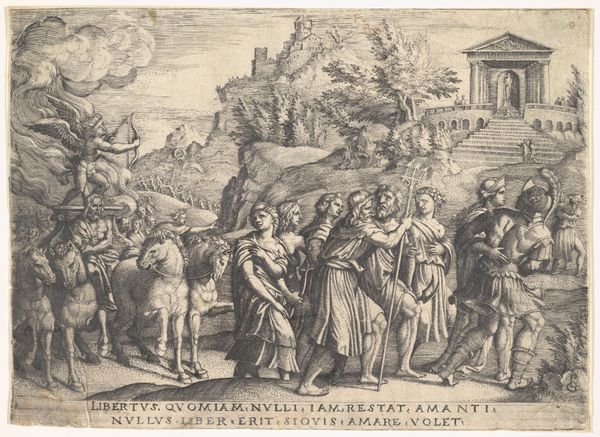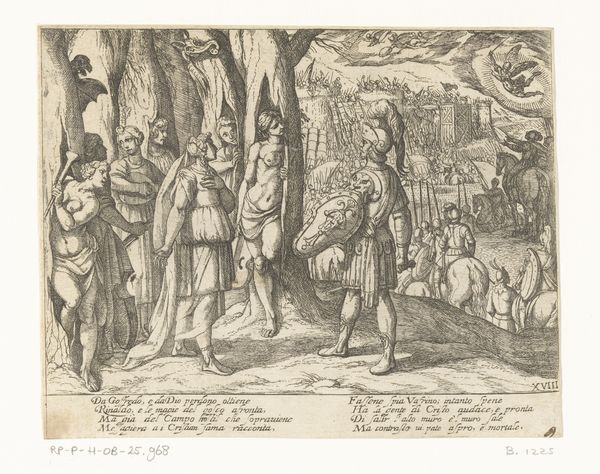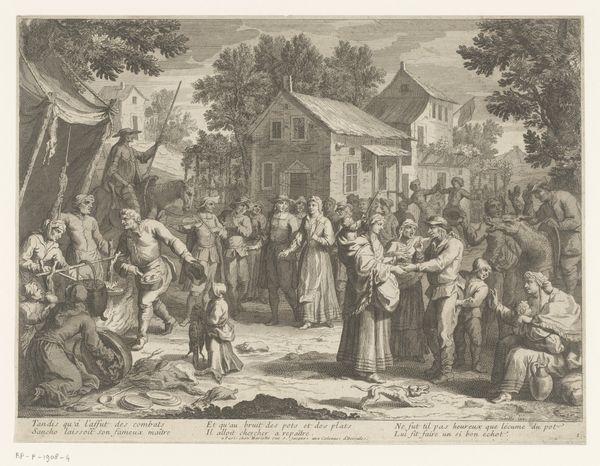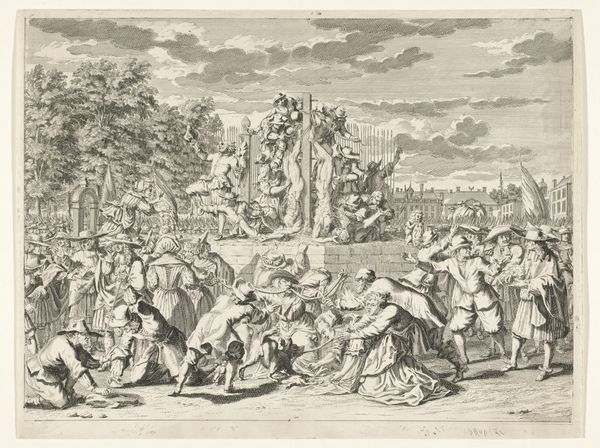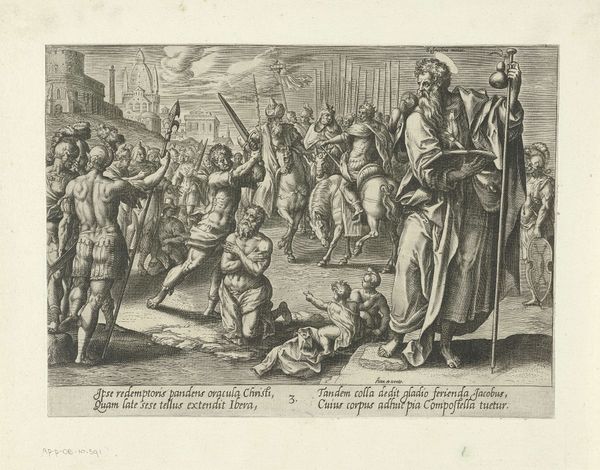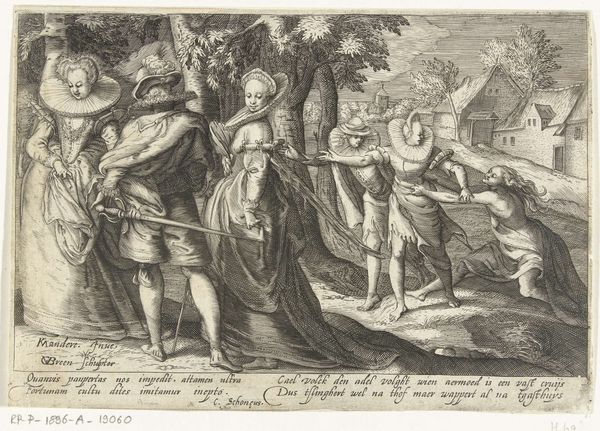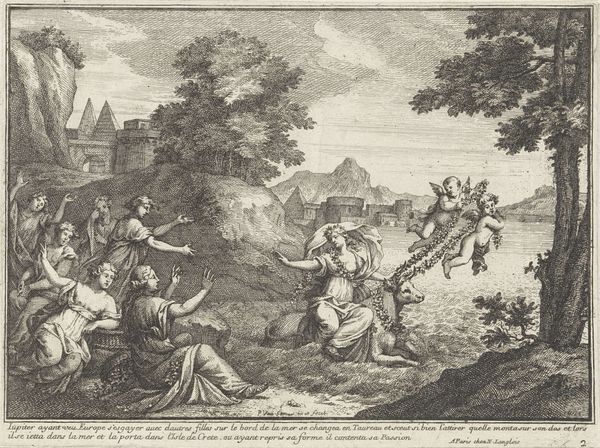
#
comic strip sketch
#
mechanical pen drawing
#
pen illustration
#
pen sketch
#
old engraving style
#
personal sketchbook
#
pen-ink sketch
#
pen work
#
sketchbook drawing
#
storyboard and sketchbook work
Dimensions: height 315 mm, width 383 mm
Copyright: Rijks Museum: Open Domain
Curator: Here we have a fascinating print, “Uitgebeelde spreekwoorden,” or “Story in Proverbs," created sometime between 1619 and 1655 by Pierre Elle. It's a dense, intricate scene teeming with figures. What are your first impressions? Editor: It's overwhelmingly busy! A flurry of tiny bodies enacting… something. There’s a central tree dominating the composition and vignettes packed everywhere else. Is that text scrawled underneath? Curator: Indeed! The print illustrates a multitude of Dutch proverbs. These sayings are brought to life through these miniature scenes. The artist is offering us a societal portrait rendered in symbolic action. Editor: It does feel very of its time, reflecting its cultural moment. This imagery is so embedded within specific socio-economic concerns. How do we interpret this from a contemporary perspective? Are we even meant to “get” all the references? Curator: Not necessarily. Perhaps more relevant is the role these proverbs played in shaping moral discourse, policing gender roles, and enforcing social hierarchies. See how men and women engage in separate scenarios. Gender, class, and moral standings are at play within those depicted situations. The language of the time dictates the values within which the artwork should be viewed. Editor: So the work served as a means for communicating and perpetuating social norms and even anxieties about societal order. It certainly opens questions regarding power and control. Even the act of collecting these idioms reflects a desire to define societal behaviors. The fact they're literally sketched across this space creates an interesting dichotomy of trying to claim cultural phenomena with rigid structure. Curator: Precisely. Elle gives us a glimpse into the Dutch Golden Age through its shared values, or, rather, through the behaviors and norms it deemed important enough to codify—or maybe even criticize. Editor: Seeing this detailed compilation makes one think about how language molds our perspectives on class, behavior, gender, and other issues to this day. It's as much a historical document as an artwork. Curator: It provides a context for understanding where we derive the origin for our values. How we have changed over time. Editor: I couldn’t agree more. I’ll certainly be contemplating this work from now on.
Comments
No comments
Be the first to comment and join the conversation on the ultimate creative platform.
